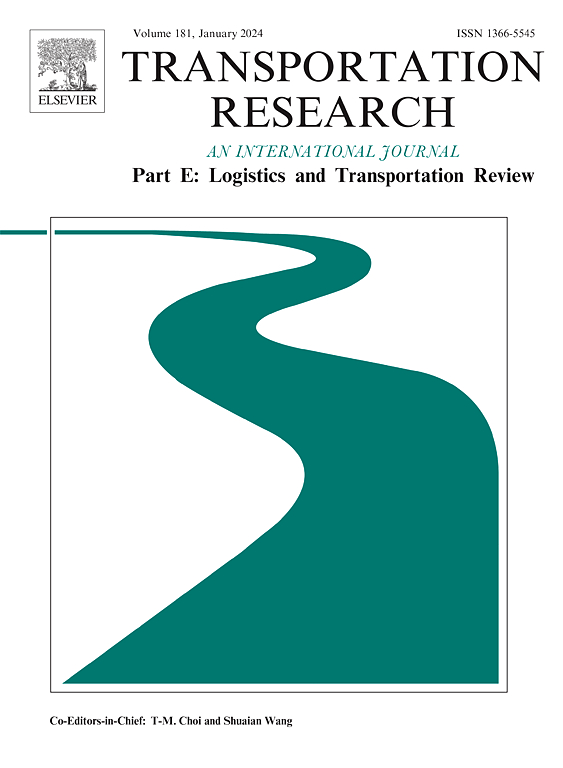采用浮动期权的多期约束性货运合同
IF 8.8
1区 工程技术
Q1 ECONOMICS
Transportation Research Part E-Logistics and Transportation Review
Pub Date : 2025-09-28
DOI:10.1016/j.tre.2025.104419
引用次数: 0
摘要
卡车货运市场是美国运输业的重要组成部分,但在这个市场中使用的货运合同被认为是不具约束力的。大多数托运人都面临运费拒收问题,被迫从现货市场采购。摆动期权是一种奇特的期权,它允许持有者购买或出售一定数量的标的资产。本研究建议使用摆动期权作为托运人和承运人之间的多期约束性货运合同,并使用运费均值回归过程、赫尔-怀特树模型和动态规划构建公平估值框架。通过数值实例解释了摆动期权货运合约的多期价格行为。对几个关键模型参数进行敏感性分析,了解模型参数对摆动期权货运合约价格的影响。此外,比较了不同市场条件下六种投标策略的表现,有助于托运人在购买或签订摆动期权合同时做出明智的决策。我们的研究结果表明,在现有的高运价货运合同中,托运人通过向现货市场投标并以较低的执行价格购买短期看涨期权货运合同获得最大收益。本文章由计算机程序翻译,如有差异,请以英文原文为准。
Multi-period binding freight contract using swing options
The truckload freight market is a critical component of the US transportation industry, yet freight contracts used in this market are considered non-binding. Most shippers are challenged with freight rejection problems and forced to source from the spot market. The swing option is an exotic option that allows the holder to purchase or sell a defined quantity of underlying assets. This study proposes the use of swing options as multi-period binding freight contracts between shippers and carriers and builds a fair valuation framework using a mean-reverting process for the freight rates, the Hull-White tree model, and dynamic programming. Numerical examples are given to explain the multi-period price behaviours of the swing option freight contract. Sensitivity analyses are conducted on several key model parameters to understand the impacts of model parameters on the price of the swing option freight contract. Moreover, the performance of six tendering strategies is compared under different market conditions, which helps shippers make informed decisions on purchasing or entering into swing option contracts. Our results show that the shipper in an existing freight contract with a high freight rate benefits the most by tendering to the spot market and purchasing the short-term call swing option freight contract at a low strike price.
求助全文
通过发布文献求助,成功后即可免费获取论文全文。
去求助
来源期刊
CiteScore
16.20
自引率
16.00%
发文量
285
审稿时长
62 days
期刊介绍:
Transportation Research Part E: Logistics and Transportation Review is a reputable journal that publishes high-quality articles covering a wide range of topics in the field of logistics and transportation research. The journal welcomes submissions on various subjects, including transport economics, transport infrastructure and investment appraisal, evaluation of public policies related to transportation, empirical and analytical studies of logistics management practices and performance, logistics and operations models, and logistics and supply chain management.
Part E aims to provide informative and well-researched articles that contribute to the understanding and advancement of the field. The content of the journal is complementary to other prestigious journals in transportation research, such as Transportation Research Part A: Policy and Practice, Part B: Methodological, Part C: Emerging Technologies, Part D: Transport and Environment, and Part F: Traffic Psychology and Behaviour. Together, these journals form a comprehensive and cohesive reference for current research in transportation science.

 求助内容:
求助内容: 应助结果提醒方式:
应助结果提醒方式:


